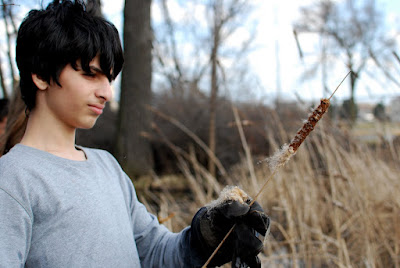Guest Post by: Evan Beierwaltes
For my Eagle Scout project I organized the construction of bat nursery houses. The project came about after talking to Mrs. Riha who wanted to add bat houses to enhance the Oak Savanna environment.
For my Eagle Scout project I organized the construction of bat nursery houses. The project came about after talking to Mrs. Riha who wanted to add bat houses to enhance the Oak Savanna environment.
Bats
are indicators of a healthy environment and can be important assets
for insect control. For example, West Nile Virus is mostly spread by
mosquitoes and they are a large portion of a bat’s diet. Research
has shown that a small bat can eat more than 1,200 mosquitoes in a
single hour. Bats cannot contract the West Nile Virus by eating
infected mosquitoes. One of the most effective and environmentally
friendly ways to reduce the mosquito population near your home is to
install bat houses.
I
researched and found construction plans for a 4-chamber bat nursery
house. With my parents’ help, I found a gentleman who was skilled
in wood working and agreed to assist with cutting and construction of
the boxes. Materials and cash were donated to complete the project.
Volunteers from my boy scout troop helped with the preparation and
assembly. School maintenance installed the completed houses per my
instructions regarding location, height, and orientation. The houses
can be easily seen from the south side of the Oak Savanna.
We
have high hopes for occupancy of the houses but we’ll have to be
patient as it can take up to a year for bats to establish a home
within the bat boxes. We will be watching for any activity over the
next year and the telltale sign of bat droppings. As I pointed out,
“Unfortunately, you can’t just put up a vacancy sign.”


























